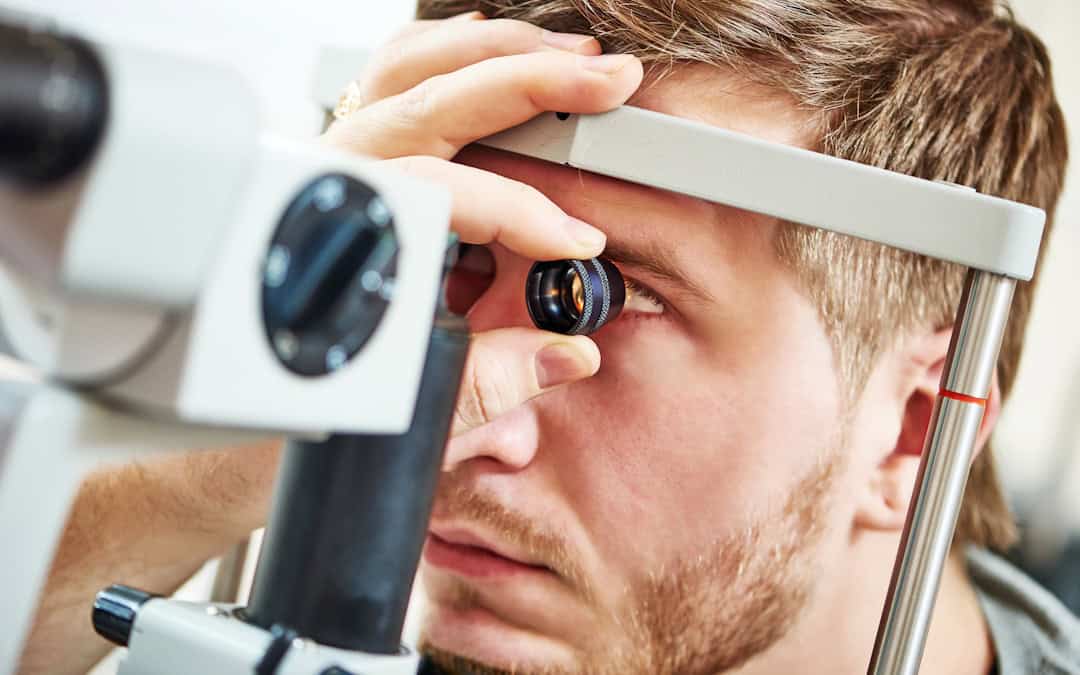An estimated 80 million people worldwide suffer from glaucoma according to the Glaucoma Research Foundation. This chronic eye disease impacts the optic nerve and can lead to vision loss or even blindness. Despite this, roughly half of all people who have glaucoma don’t even realize it. In most cases, it is necessary for a patient to get tested by their optometrist to determine if they have any indications of glaucoma. If you are concerned that you might have glaucoma, it is important to get tested as soon as possible.
There might be some fear or apprehension on your part about getting tested. It is understandable to hold a certain level of fear of the unknown. However, that is precisely why we are going to explore how doctors test for glaucoma so that you can perhaps feel more comfortable about getting tested yourself.
The Seriousness of Getting Tested
Glaucoma is the leading cause of blindness for people over age 60. Fortunately, early detection and treatment and prevent this worst-case scenario outcome. It is all about raising awareness of the threat and scheduling a comprehensive eye exam as soon as possible.
What Types of Glaucoma Exist?
Your eye care doctor can go over the specifics of a potential glaucoma diagnosis with you. However, you should know that there are two main types of glaucoma that patients might suffer from. These are Open-Angle Glaucoma and Angle-Closure Glaucoma.
Open-Angle Glaucoma
The most common form of glaucoma is open-angle glaucoma. This is a form of this disease in which the eye does not drain fluid well enough and essentially gets clogged up. Pressure within the eye begins to build and this can lead to direct damage to the optic nerve. Despite this, the patient will not feel pain from it and is unlikely to notice any changes to their vision in the beginning. That makes open-angle glaucoma particularly challenging simply because it is nearly impossible to detect without an eye exam.
Your optometrist can detect open-angle glaucoma in the early stages like this if you schedule an eye exam that includes a glaucoma test. That is yet another reason to put this on your agenda. Without such a test, you are unlikely to be aware of the fact that you might suffer from open-angle glaucoma.
Angle-Closure Glaucoma
Though less common, angle-closure glaucoma ought to be treated seriously as well. Someone who has this type of glaucoma has an iris that is particularly close to the drainage angle in their eye. It may be so close to the drainage angle that the iris ultimately blocks or obstructs the drainage angle entirely. If that is the case, then pressure in the eye will build quite quickly and will likely damage the optic nerve.
The pressure can build so quickly and the damage be done so rapidly that it is known as an acute attack. This is a true emergency, and you should see an eye doctor as soon as possible if this is happening to you. Be on the lookout for signs that this might be happening, including:
- Sudden vomiting
- Severe eye pain
- Headaches
- Halos or rainbow-colored rings appear around lights
- Sick to your stomach
These can all be signs that you are in the midst of an acute attack and need to see a professional as soon as possible. That said, this can still be treated.
Testing for Glaucoma
There are a multitude of different tests that your eye doctor might consider when testing you for glaucoma. That said, it is most often the case that they will perform a simple test as part of your dilated eye exam. The National Eye Institute explains:
Eye doctors can check for glaucoma as part of a comprehensive dilated eye exam. The exam is simple and painless — your doctor will give you some eye drops to dilate (widen) your pupil and then check your eyes for glaucoma and other eye problems. The exam includes a visual field test to check your side vision.
The test is fast, easy, and requires just a few minutes of your time. Based on this test, the doctor can rule out a diagnosis of glaucoma or recommend additional testing if they spot something that they need to look at a little more closely. The optimal outcome is that they can fully rule out a glaucoma diagnosis, but you will want to know either way.
How Frequently Should You Get Tested?
This is a question that varies from patient to patient. You should ask this question of your eye doctor and see what they believe is appropriate for your particular situation. That said, it is recommended that you schedule a comprehensive eye exam every one to two years if you are in a higher-risk group. Among those with higher risks include the following:
- Anyone over the age of 60
- African Americans over the age of 40
- Anyone with a family history of glaucoma
These groups should be particularly aware of the risks associated with glaucoma and what they need to do to keep their eyes healthy. It is best to always speak with your optometrist and ask any questions that you might have about this exam and your need to take it.
Two Types of Glaucoma Tests to Know About
There are two common types of glaucoma tests that you may want to learn more about if you are in any way concerned that you might have this ailment. Those tests are:
- Tonometry test
- Ophthalmoscopy
Knowing the basics of what to expect with each kind of test can help you have a better grasp of what it will be like to have these tests done.
Tonometry Test
The pressure on the inside of your eye is likely not something that you have given a huge amount of thought to before. However, identifying when there is an excessive amount of pressure on the inside of your eye can be one of the easiest ways to get an early indication of the development of glaucoma.
The tonometry test literally examines the amount of pressure on the inside of your eye and compares that to the standard measurements that are expected in a normal and healthy eye.
Ophthalmoscopy
This eye exam allows your eye doctor to examine the back of your eye. That is only possible by using a magnifying glass and a bright light. Your eye doctor will be able to see what is going on with a variety of elements that directly relate to the overall health of your eyes. In particular, your optometrist will be checking on your:
- Blood vessels
- Retina
- Optic disc
The purpose of this exam is to check for any damage or injuries to parts of your eyes that cannot easily be seen. If those issues are spotted early enough, then it is possible that your eye doctor can take the measures necessary to help you get the care that you need before the situation progresses any further.
Visit Chang Eye Group to Schedule a Glaucoma Test with a Comprehensive Eye Exam Today
A glaucoma test is part of the comprehensive eye exam that we offer at Chang Eye Group locations in Pittsburgh. Our experienced professionals can walk you through the entire process and explain anything that you might want to know about the exam and what you can expect from it.
The most important thing is that you feel comfortable as a patient to ask any questions that you might have and to get the help that you require before any kind of issues may become worse. When you reach out and contact us today, we will work with you to get your appointment scheduled as soon as possible. We look forward to seeing you at our Greentree or Peters Township locations.






